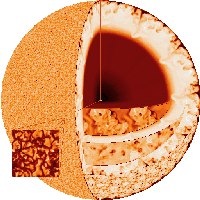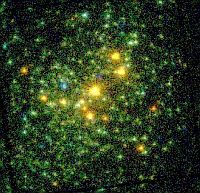- Home
- Science
- Research Groups
- Research Topics
- Annual Report
- Education
- Agenda
- Public & Media

- Contact Us
de Géophysique (Bât. B5c)
Quartier Agora
Allée du 6 août, 19C
B-4000 Liège 1 (Sart-Tilman)
Belgique
Tel.: 04.366.9779
Fax: 04.366.9729
Research Topics
Stars
Stars are one of the major components of the observable Universe ; they are a major source of information on our cosmos. The knowledge of their external and internal properties and of their evolution is therefore crucial.

The ASTA group is specialized in the modelisation of the internal structure of stars, and their evolution. The targets covered the whole main sequence, from solar-like stars to the most massive objects, as well as the red giants. However, most observations only yield information about the superficial layer, because the stellar interior is opaque. Fortunately, many stars vibrate, and these oscillations occurs in deep layers. Using these oscillations, asteroseismology can probe the stellar interior (position of convection layers...) and the physical processes in the core (transport of the chemical elements, of angular momentum, ...).

The GAPHE group study massive stars (i.e. having 20 to 100 solar masses). Main sources of ionizing radiations, heavy elements and mechanical energy, these stars truly shape their host galaxies. Unfortunately, despite their importance, these stars are not well known. Using observations from the radio wavelengths up to the high-energy domain, the GAPHE is able to constrain their physical properties, their evolution, and their interactions (between them or with their environment).
In addition, the multiwavelength study of the formation of low-mass stars is also a research field of the GAPHE. These analyses, linked to the massive stars belonging to the same clusters, try to unveil the parentage between the different generations of stars within a same cluster.
Stellar clusters are the sites where most stars are born. However, as they dissolve with time, they only contain a few percents of the stellar mass. The OrCA group try to modelize this process and use these clusters to trace the evolutions of galaxies.



 Version française
Version française